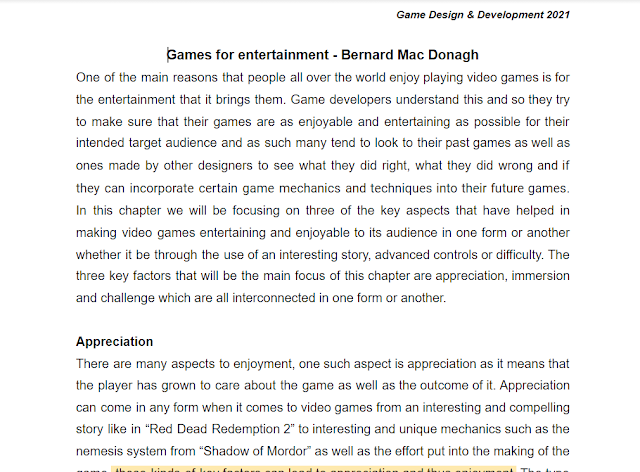Game Elements
In the paper "What are the qualities of Games?" the author in a vary informal way, first goes in depth on on the recurring themes of games such as "games have rules, conflict, goals, decision-making, and an uncertain outcome" as well as the giving a simplified form of the different definition of games such as "games are activities, they are artificial/safe/ outside ordinary life they contain elements of make-believe/representation/simulation, they are inefficient, they are art" and how these are formal element's and goes on to provide a like to another an amazon page for Challenges for Game Designers. The author then goes on to talk about "Atomic Elements" of a game with links to different aspects (1) Player, (2) Objectives, (3) Rules, (4) Resources and Resource Management, (5) Game State, (6) Information, (7) Sequencing, (8) Player Interaction, (9) Theme, (10) Games as systems. The author then goes on to talk about critical analysis and how it is an unbiased review of a game and offers an three step process to do one step 1: Describe the game’s formal elements, step 2: Describe the results of the formal elements when put in motion step 3: Try to understand why the designer chose those elements and not others.
The second paper is called "Game design research" written by Kultima Annakaisa is done much more formally and academic. In the introduction the paper talks about different peoples option on game design research such as Staffan Bjork, Frans Mayra and Espen Aarseth. It then goes on to talk about what game design is and what game developers think it means witch can vary widely as to some ‘game design’ can mean “emotion engineering” or “largely communication” whilst for the other “everything that goes into a game is more or less game design" and how hard it is to be scientific about game design to quot a design theorist mentioned in the paper “The scientific apparatus simply lacks the means to deal with such knowledge, and thus design has to develop means of its own". Annakaisa then goes on to talk about the history of design research and how it has developed into game design research. She then goes on to discuss how by approaching game design as design research could revolutionize the way that we see game studies and how the design orientation of game studies could lead to fruitful collaborations between the researchers interested in game design she even gives us an examples such as utilizing the taxonomy of Cross which would add to the body of the basic literature within the game studies.
The finale piece was actually a video called "Introduction to Game Design: Prototype Your Game" by LiveLessons where they explain the importance of prototypes and a few examples of how to prototype a game such as first drawing it on paper , instead of staring off coding, and using cut out to show moving parts. Another why is using physical objects for example in the video there make a ping pong game so for a physical ping pong table. Then when they had an idea of how the game was going they went on to make a crud and simple digital prototype






Comments
Post a Comment